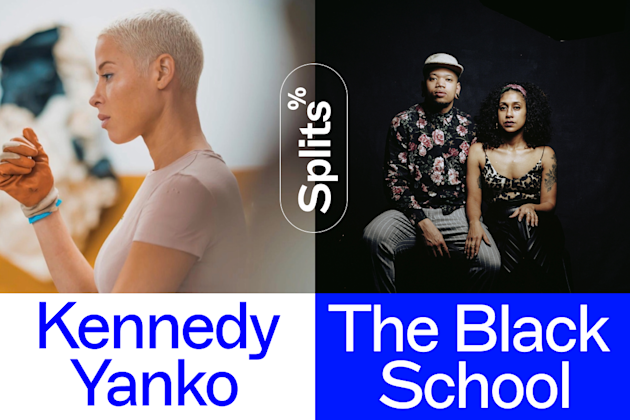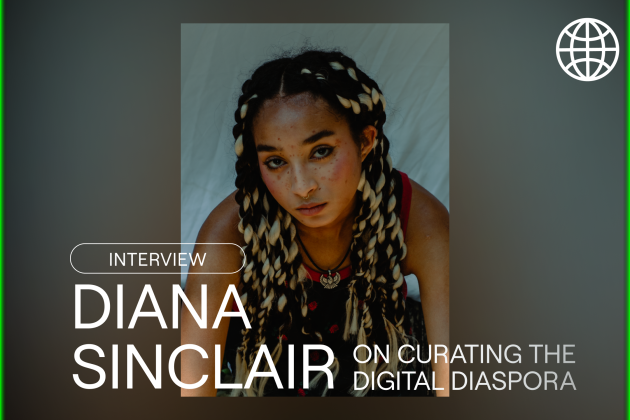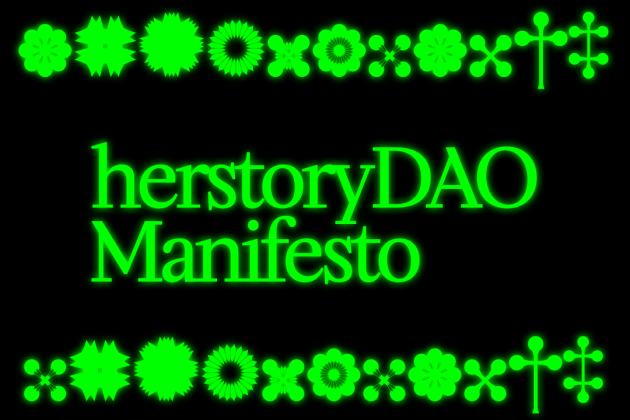Francesca Gavin on the intrigue of formlessness.

Curator and writer Francesca Gavin is what we’d call a Renaissance woman of the contemporary art world. With experience curating at Soho House, Palais de Tokyo, and the Manifesta 11 biennial, she has worked with renowned artists all over the world. She’s also written five books, plus penned and edited countless articles and essays for publications like Vogue, Elle, GQ, Dazed & Confused, Kaleidoscope, and many more. There’s no doubt that few can match her expertise when it comes to navigating the contemporary art landscape.
This past week, Francesca launched her first-ever NFT show inspired by an actual Renaissance woman: the Mona Lisa. When Leonardo da Vinci’s most famous painting was stolen from the Louvre in 1911, museum-goers still flocked to see the empty space on the wall where it used to hang, showcasing how humans’ desire to connect with an artwork can transcend the physical object itself. Bringing together four artists—Sara Ludy, Scorpion Dagger, Damien Roach, and Thomas Webb—the show explores how digital art NFTs are pushing our conception of reality by playing with ideas of presence, absence, and nothingness.
To learn more about her exhibition and the concepts that inspired it, we sat down with Francesca to get her thoughts on how web3 will impact the art world, and how she sees artists benefitting from the NFT format in the future.
In your curatorial statement for The Mona Lisa Effect, you talk about “infinite reproduction as a mode of power,” and how NFTs are calling that into question. What do you think power will look like in a web3 context?
I'm really fascinated by the possibility of new forms of value. Are there practical ways to create new forms of art, or financial support, or cultural appreciation? We are at a moment when web3 is yet to be colonized by purely financial or tech points of view, which I think is very exciting from a creative perspective. I'm hoping power in a new digital context can demonstrate how people can communicate and support each other in healthier and more conscious ways. That could be everything from UBI (universal basic income), to new ways for critical engagement and experiencing art.
What was it about these particular works and artists that inspired you?
In every exhibition I've curated, I am always drawn towards mixing artists from different backgrounds. Sara Ludy and Damien Roach both have strong backgrounds in the 'fine' art world, and I knew they would create abstract and conceptual work that would fit perfectly with this exhibition's idea. Their pieces immediately demonstrate our obsession with emptiness and nothing.
The show is also a bit of a Trojan horse that allowed me to bring artists not normally seen in the gallery world into a 'fine' art context, as CNL is a collaborative space between two very respected Vienna-based galleries. Thomas Webb is completely native to digital spaces. I knew he would do something incredible to question the structures he knew well, and to critique the art world.
I have been obsessed with Scorpion Dagger's work for many years. I love the way he uses art history without giving a toss about its original context. For me, the four artists in The Mona Lisa Effect are some of the most interesting people working with digital work in any context. They’re all intelligent, funny, thought provoking, and visually engaging. The work is just strong.
As a curator, writer, and editor with a long-term commitment to the arts, how do you see NFTs impacting the way artists make work and the relationship they have to the market?
The fact that artists have more autonomy over their work is incredible—in particular, I see the way secondary sales can function as being impactful. When a painting or sculpture goes to auction, on the other hand, artists do not see any of those speculative profits and the worth of their work can be completely turned upside down through both high or low (or no) sales.
In terms of process, I don't think there is a huge change in how artists are approaching coming up with ideas or making things. Despite that, there is a definite lightness and sense of experimentation and enthusiasm at the moment, which I believe has also come from reaching new audiences.
How do you see the experiences of “presence” and “absence” playing out online?
People have been talking about the boundaries between URL and IRL art for over a decade, and I think there is barely a line between those two things now. What we watch, interact with, and engage with online is contemporary life. It is how we access the world. Despite this, I'm still conscious that this is not a totally utopic experience. I've done shows about how our relationship to technology can make us uncomfortable and fragment our relationship to our bodies, for example, and written extensively about being critical about the screen. However, the idea of an art piece being formless—just an idea, or an action—is what makes so much art interesting.
I think the absence of NFTs outside of digital space is replaying some of the conversations conceptual art had to deal with for decades. It was part of the reason why I was looking at the Mona Lisa in particular. It’s the most valuable painting in the world, and the most reproduced—yet it almost isn't really a 'thing' as much as it’s an idea. And when it was stolen, it was really just a blank space that people lined up to look at for two years. It became famous because it wasn’t there at all.
Read more

Kennedy Yanko Splits with The Black School

Diana Sinclair on curating The Digital Diaspora.
